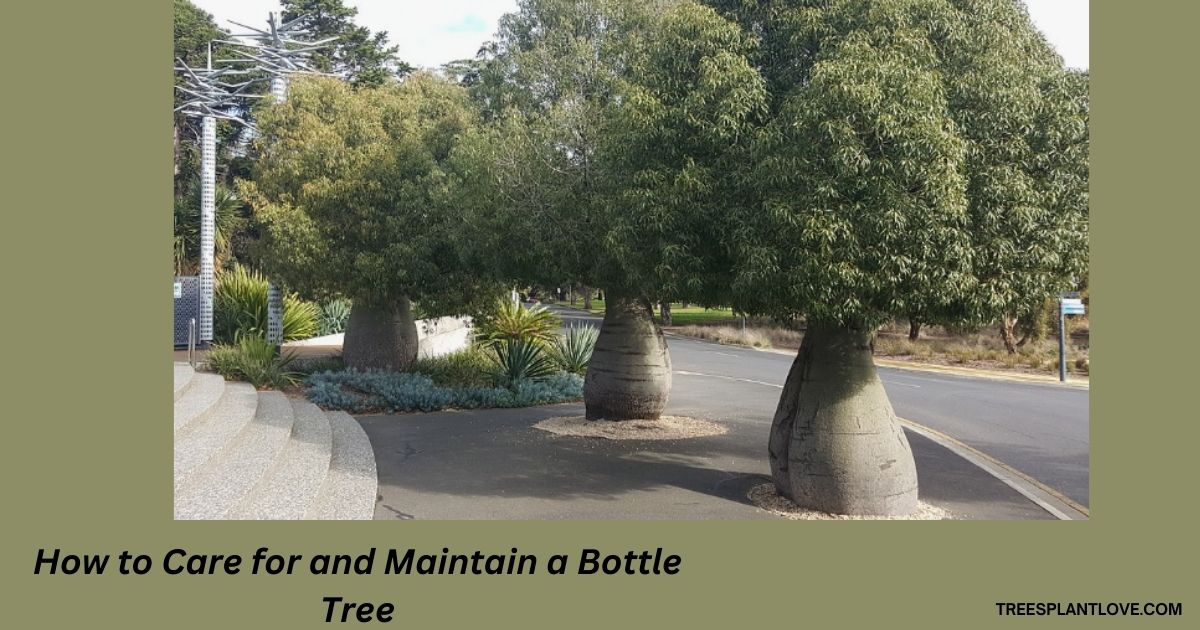
How to Care for and Maintain a Bottle Tree: Essential Tips for Healthy Growth
How to Care for and Maintain a Bottle Tree: A bottle tree is a unique and intriguing addition to any garden or landscape. Originating from various cultures, the bottle tree combines both artistic flair and a fascinating botanical structure.
Whether you’re considering adding one to your garden or already have one, proper care and maintenance are essential to ensure its health and longevity. This article will guide you through the key steps to care for and maintain a bottle tree.
What Is a Bottle Tree?
Before diving into care tips, let’s briefly explore what a bottle tree is. A bottle tree typically refers to a tree or shrub adorned with bottles hanging from its branches, a tradition that has deep roots in various cultural practices, particularly in Africa and the southern United States.
The tree itself can either be an ornamental tree or a species such as the Brachychiton rupestris (Queensland Bottle Tree) or Celtis species, which naturally form swollen, bottle-like trunks. However, in modern landscaping, the term “bottle tree” often refers to the artistic custom of hanging colorful glass bottles on branches, creating a striking focal point in the garden.
Selecting the Right Location
The first step in caring for a bottle tree is choosing the right location. Bottle trees thrive in full sunlight and prefer warm, dry conditions. Select a spot in your garden that receives at least 6-8 hours of direct sunlight daily. Well-drained soil is also crucial, as bottle trees are susceptible to root rot in soggy conditions. Sandy or loamy soils are ideal, so be sure to avoid areas with heavy clay or poorly-draining soil.
If you’re growing a bottle tree in a pot, ensure the container has good drainage to allow water to escape and prevent root waterlogging.
Watering the Bottle Tree
While bottle trees are drought-tolerant once established, they still require regular watering during the initial planting period to help them establish deep roots. Water the tree deeply once a week, ensuring the soil is moist but not soaking wet. Overwatering is a common mistake that can lead to root rot, so it’s best to let the soil dry out between waterings.
During the warmer months, you might need to water the tree more frequently, especially if the weather is unusually hot. However, during cooler seasons, reduce watering since the tree will be in a dormant state and require less water.
Fertilizing the Bottle Tree
Bottle treesare relatively low-maintenance when it comes to fertilizing, but to encourage healthy growth, it’s a good idea to feed the tree once or twice a year. Use a slow-release, balanced fertilizer with equal amounts of nitrogen, phosphorus, and potassium (such as a 10-10-10 mix). Apply the fertilizer in early spring, just before the growing season begins, to give your tree the nutrients it needs for strong growth and vibrant foliage.
If you’re growing a bottle tree in a pot, you may want to feed it more frequently, as container plants deplete soil nutrients faster. Use a liquid fertilizer diluted to half strength to avoid overfeeding.
Pruning and Shaping the Tree
Bottle trees are known for their unique shapes, but regular pruning can help maintain their structure and appearance. Prune your bottle tree in late winter or early spring before new growth begins. This is the ideal time to remove any dead or damaged branches and to shape the tree if necessary.
Be mindful not to remove too much at once, as excessive pruning can harm the tree. Light pruning will encourage a more attractive form and improve airflow through the branches, which can help prevent disease.
For decorative bottle trees with bottles hanging from the branches, ensure that the branches are strong enough to support the weight of the bottles. You may need to remove or reposition bottles as the tree grows or as branches become heavy and strain under the load.
Pest and Disease Control
Bottle trees are generally resistant to pests and diseases, but like any plant, they can be vulnerable to occasional problems. Watch for common issues like scale insects, aphids, and spider mites, which can damage the tree’s leaves and stems. If you notice any pests, treat the tree with insecticidal soap or neem oil to eliminate them without harming the tree.
Additionally, monitor for signs of fungal diseases, particularly root rot, which can result from overwatering or poor drainage. Ensure the tree has proper drainage and adjust watering habits if you notice yellowing leaves or a decline in health.
Winter Care for Bottle Trees
Bottle trees are relatively hardy, but their care can vary depending on the climate you live in. In warmer climates, bottle trees are generally evergreen, but in colder areas, they may require additional protection during the winter months.
If your bottle tree is in a container, move it to a sheltered location, such as a garage or covered porch, during the coldest months. If it’s planted in the ground, consider covering the base of the tree with mulch or burlap to protect the roots from frost damage. If your region experiences hard freezes, you might want to wrap the trunk with a frost cloth to prevent cracking.
Cleaning and Maintaining the Bottles
For bottle trees that incorporate actual bottles into their design, maintenance extends beyond caring for the tree itself. Periodically, check the bottles for any damage, cracks, or fading. Over time, the sun can cause the glass to lose its color or degrade. If necessary, replace damaged bottles to maintain the aesthetic appeal of the tree.
In addition, regularly clean the bottles to keep them looking their best. Dust, dirt, or debris can accumulate inside the bottles, making the display less vibrant. A simple rinse with soapy water will help restore the bottles to their original shine.
Propagation of Bottle Trees
If you want to propagate your bottle tree, you can do so by taking cuttings. Select a healthy branch and cut it just below a node. Allow the cutting to dry for a few hours to form a callus, then plant it in well-drained soil. Keep the cutting in a warm, sunny spot and water it lightly. With proper care, the cutting should develop roots and begin to grow into a new tree.
Conclusion
Caring for and maintaining a bottle tree requires attention to its environment, proper watering, pruning, and pest management.
Whether you have a traditional bottle tree adorned with colorful glass bottles or a natural species like the Queensland Bottle Tree, following these tips will help ensure your tree remains a stunning focal point in your garden. By providing the right care, your bottle tree will thrive, offering beauty and intrigue for many years to come.

Leave a Reply